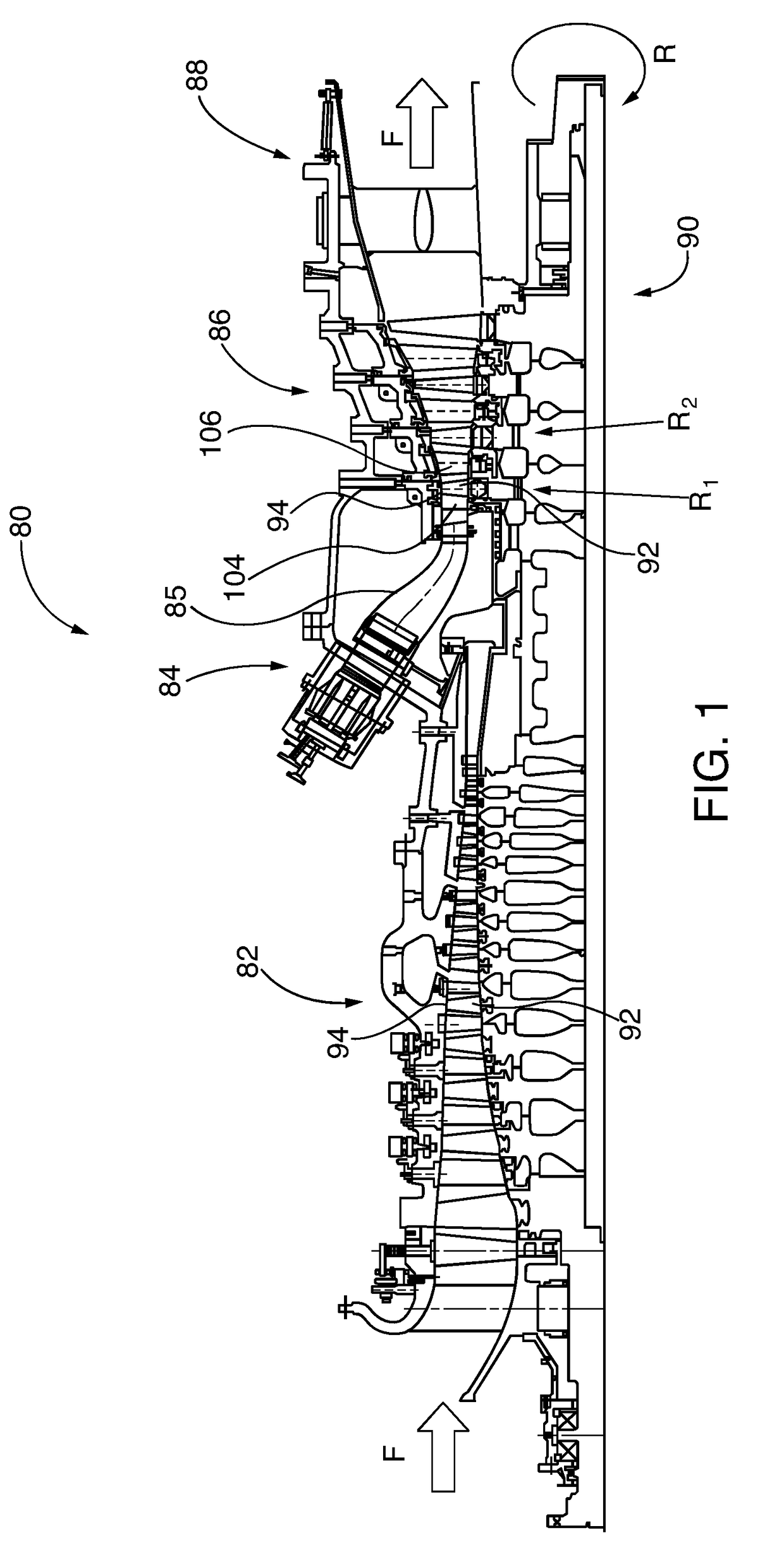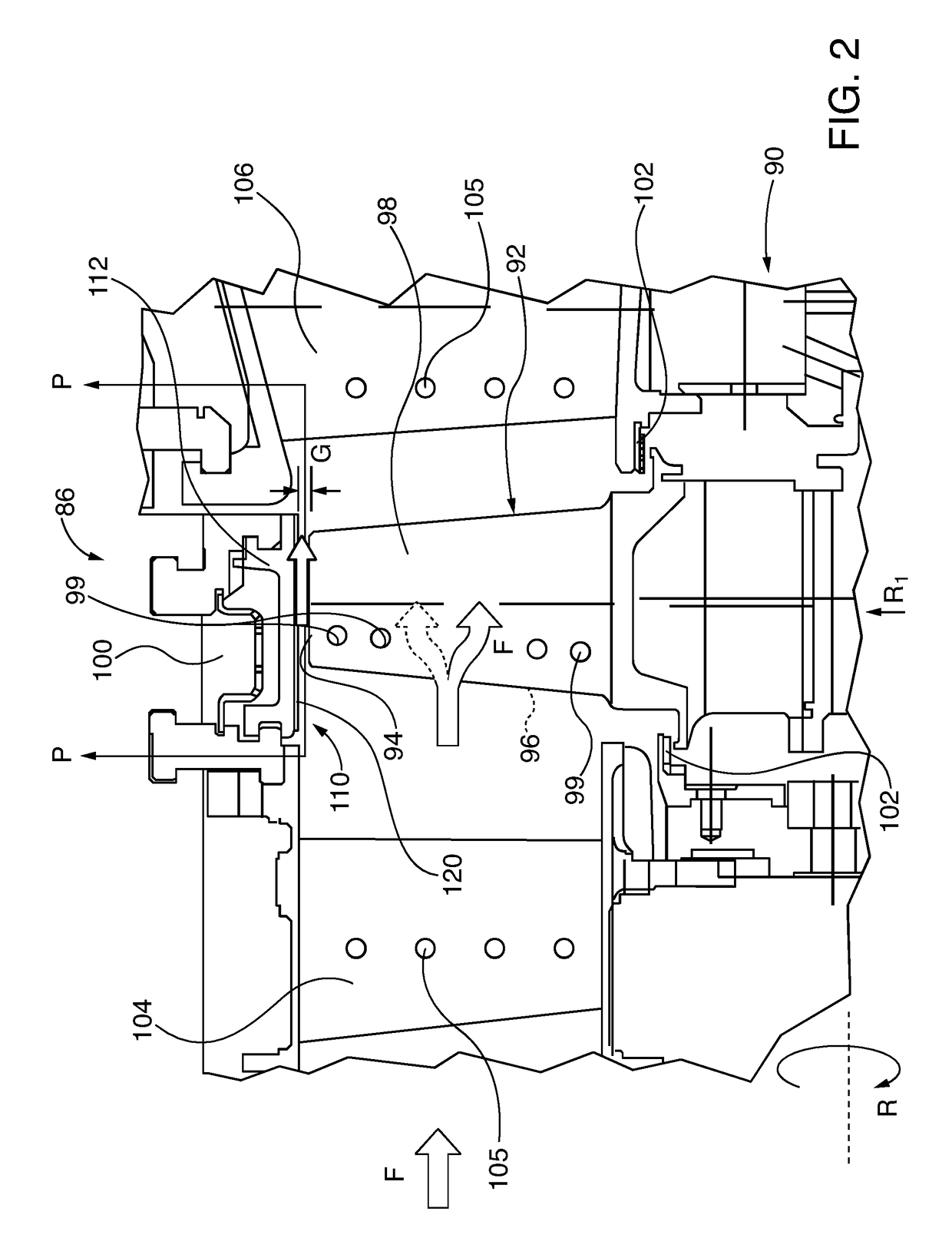Turbine component thermal barrier coating with crack isolating, cascading, multifurcated engineered groove features
a technology of thermal barrier coating and turbine component, which is applied in the direction of machines/engines, stators, liquid fuel engines, etc., can solve the problems of thermal and/or mechanical stress cracking of tbc layer, tbc/turbine component adhesion loss at the interface of dissimilar materials, and the structural integrity of tbc layer, so as to enhance the adhesion of tbc layer
- Summary
- Abstract
- Description
- Claims
- Application Information
AI Technical Summary
Benefits of technology
Problems solved by technology
Method used
Image
Examples
Embodiment Construction
[0062]Exemplary embodiments of the present invention enhance performance of the thermal barrier coatings (“TBCs”) that are applied to surfaces of turbine engine components, including combustion or gas turbine engines, as well as steam turbine engines. In exemplary embodiments of the invention that are described in detail herein, engineered groove features (“EGFs”) are formed within the TBC, and more particularly in the outer surface of the TBC. In the case of multi-layer TBC applications, the EGFs are formed in the outer surface of the outer thermal barrier coating (“OTBC”), and selectively are cut to any desired depth, including down to the substrate surface. EGF widths are also selectively varied. The EGFs are formed in furcated planform patterns, meaning multiple grooves converge, or from another alternative relative perspective, diverge in a forked pattern from a common vertex. In embodiments where three grooves converge at a vertex, they are arrayed in a bifurcated pattern, mea...
PUM
| Property | Measurement | Unit |
|---|---|---|
| combustion temperatures | aaaaa | aaaaa |
| thickness | aaaaa | aaaaa |
| thickness | aaaaa | aaaaa |
Abstract
Description
Claims
Application Information
 Login to View More
Login to View More - R&D
- Intellectual Property
- Life Sciences
- Materials
- Tech Scout
- Unparalleled Data Quality
- Higher Quality Content
- 60% Fewer Hallucinations
Browse by: Latest US Patents, China's latest patents, Technical Efficacy Thesaurus, Application Domain, Technology Topic, Popular Technical Reports.
© 2025 PatSnap. All rights reserved.Legal|Privacy policy|Modern Slavery Act Transparency Statement|Sitemap|About US| Contact US: help@patsnap.com



